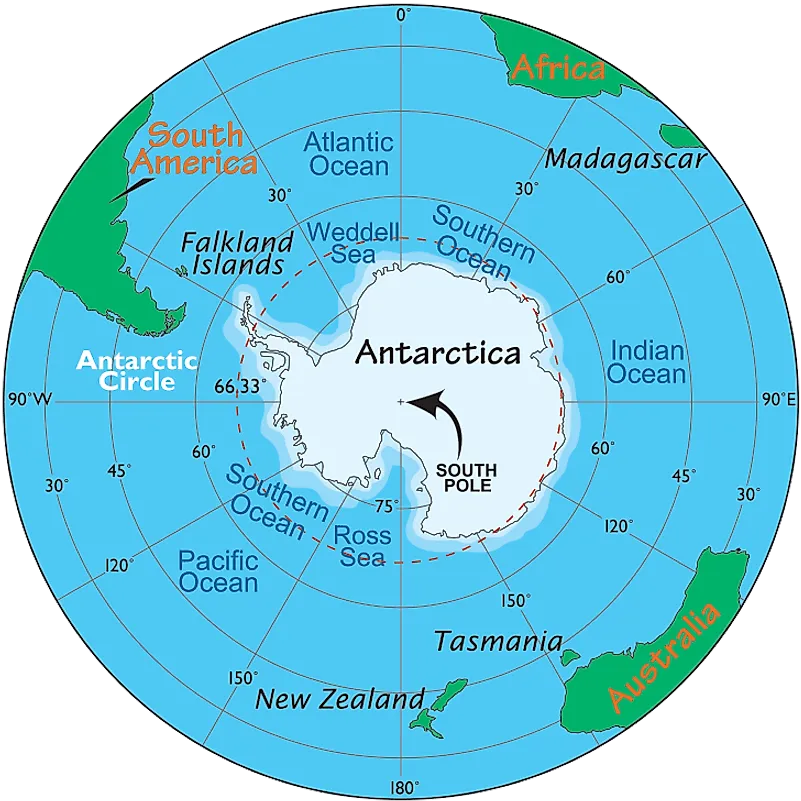Context
-
Recently, the 1959 Antarctic Treaty celebrates its 60th anniversary.
About Antarctic Treaty
- Negotiated during the middle of the Cold War by 12 countries with Antarctic interests, it remains the only example of a single treaty that governs a whole continent.

Source: Wikipedia - The treaty entered into force in 1961 and currently has 54 parties.
- Since September 2004, the Antarctic Treaty Secretariat headquarters has been located in Buenos Aires, Argentina.
- The original signatories were the 12 countries:
- Argentina,
- Australia,
- Belgium,
- Chile,
- France,
- Japan,
- New Zealand,
- Norway,
- South Africa,
- the Soviet Union,
- the United Kingdom, and
- the United States
- India became a member of this treaty in 1983. On 12 September 1983, the country became the fifteenth Consultative Member of the Antarctic Treaty.
- It is also the foundation of a rules-based international order for a continent without a permanent population.
- The treaty is remarkably short and contains only 14 articles. Principal provisions include promoting the freedom of scientific research, the use of the continent only for peaceful purposes, and the prohibition of military activities, nuclear tests and the disposal of radioactive waste.
What the treaty says about territorial claims
- The most important provision of the treaty is Article IV, which effectively seeks to neutralise territorial sovereignty in Antarctica.
- For the Antarctic territorial claimants, this meant a limit was placed on making any new claim or enlargement of an existing claim.
- Likewise, no formal recognition was given to any of the seven territorial claims on the continent, by Argentina, Australia, Chile, France, New Zealand, Norway and the United Kingdom.
- Russia, the United States and China — signatories with significant Antarctic interests who have not formally made territorial claims — are also bound by the limitations of Article IV.
- And one sector of Antarctica is not subject to the claim of any country, which effectively makes it the last unclaimed land on earth.
- The treaty also put a freeze on any disputes between claimants over their territories on the continent. Claimants agreed to abide by the rules and obligations of the treaty, which meant countries that don’t recognise claims (such as China and Russia) are free to go about scientific research and peaceful activities.
How the treaty has expanded
- Though the compact has held for 60 years, there have been tensions from time to time. Argentina and the UK, for instance, have overlapping claims to territory on the continent. When combined with their ongoing dispute over the nearby Falkland (Malvinas) Islands, their Antarctic relationship remains frosty.
- Building, operating and conducting scientific research programs are key to the success not only of the treaty, but also to the claimants’ credibility in Antarctica. Australia, for instance, has permitted Belarus, China, France, India, Italy, Russia, and the US to conduct scientific programs at their own research bases within its Antarctic territory, which covers 42% of the continent.
Challenges
- The Antarctic Treaty has been able to successfully respond to a range of challenges but circumstances are different in the 2020s compared to the 1950s.
- Antarctica is much more accessible, partly due to technology but also climate change.
- More countries now have substantive interests in the continent than the original 12.
- Some global resources are becoming scarce, especially oil.
- This will inevitably result in increased attention being given to the potential for Antarctic mining to take place sometime in the future. Calls to revisit the prohibition on Antarctic mining would seem inevitable.
- There is also uncertainty as to China’s intentions in Antarctica.
- While Australia and China cooperate on a number of Antarctic scientific and logistics programs, the direction of China’s Antarctic engagement and long-term support for the treaty is not clear.
- There is considerable speculation as to China’s interests in Antarctic resources, especially fisheries and minerals, and whether China may seek to exploit weaknesses in the treaty system to secure access to those resources.
International Relations Current Affairs for UPSC 2021 : Click here
